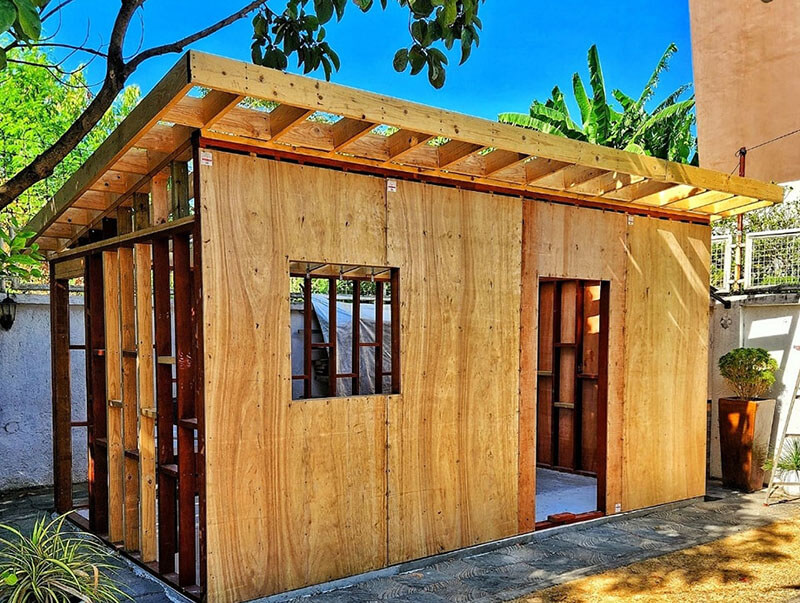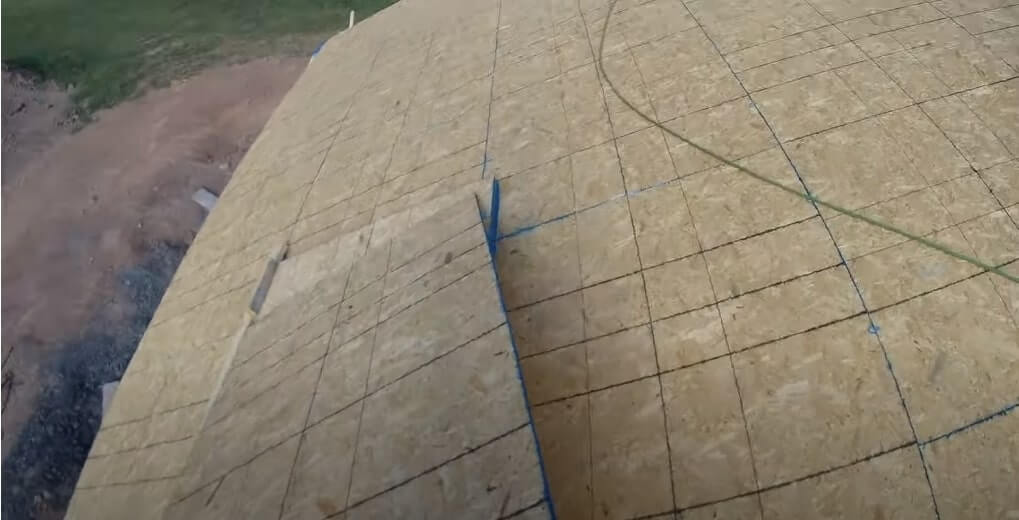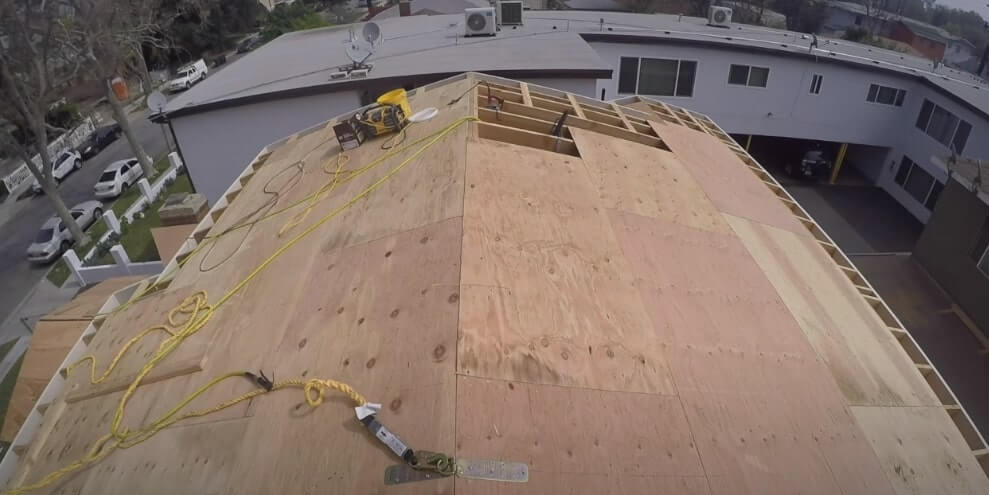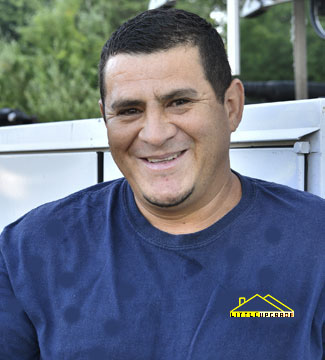The sheathing can be exposed for one to four months, depending on various factors, such as the material used, environmental issues, exterior cladding, etc. Materials like OSB can hold on for two to three months, and plywood can do more.
But, some environmental conditions can significantly reduce the holding span, affect the materials greatly, and even damage them. I will go through everything you need to know. Stay with me to learn more!
Quick Jump
5 Factors That Influence Duration Of Sheathing Can Be Exposed

The sheathings protect my and your homes from the relentless onslaught of the elements, and it can be dangerous to have the sheathing exposed and all that comes with it.
That’s why I will unravel the factors that influence the duration sheathing can withstand in this battle for structural supremacy. I will try to be brief and review the factors that will help you understand the situation.
Factor #1: Sheathing Material
Depending on your budget, preference, and other things considered, you might choose different types of sheathing materials. And depending on your material, it has different levels of resistance to moisture, UV radiation, and other environmental factors.
Besides, the properties and composition of the material will determine how well it withstands exposure.
Here is a table of all the materials you can use for roof sheathing and their characteristics and exposure tolerance. But remember that exposure tolerance varies based on many things, including environmental conditions, which I will discuss later.

| Material | Unique Characteristics | Environmental Conditions | Exposed Tolerance |
| Plywood | Strong, durable, and widely available | Avoid excessive moisture and direct sunlight | Two months to six months |
| Oriented Strand Board (OSB) | Cost-effective, dimensional stability, and suitable for load-bearing needs | Limited exposure to moisture and UV radiation | Three months |
| Composite Panels | Lightweight, high strength, and excellent insulation properties | Protect from excessive moisture and temperature swings | Two months |
| Structural Insulated Panels | High insulation value, energy-efficient, and quick installation | Protect from prolonged moisture exposure | Three months (Varies based on Product) |
| Metal Panels | Durable, fire-resistant, and low maintenance | Handle UV exposure and moisture adequately | Two months (Varies based on Product) |
| Fiberboard | Excellent insulation, sound absorption, and moisture resistance | Avoid prolonged exposure to moisture and direct sun | Three months (Varies based on Product) |
| Concrete | Extremely durable, fire-resistant, and provides thermal mass | Protect from extreme temperature fluctuations | Four months (Varies based on Product) |
Factor #2: Environmental Conditions
Proper installation and other conditions can affect the limit and span of exposure tolerance and environmental conditions. Depending on where you live and the overall environment will highly affect your sheathing, and you might need to consider these things even when you live in a perfect place.
Sunlight: Many of us like sunny places. And you might have built homes in those areas. But, while discussing roof sheathing and sunlight, if your sheathing is exposed to direct sunlight, it can experience degradation, discoloration, and reduced structural integrity over time, particularly relevant for materials like OSB and plywood.
Temperature: Whether you live in a cold place like Alaska, or a hot place like Florida, temperate will affect the exposure tolerance of your material and overall roof.
For example, if you have used plywood, be aware that excessive heat can cause sheathing materials to expand and contract, leading to warping or cracking.
On the other hand, fiberboard or composite panels can be highly affected in cold weather as cold weather can make the material more brittle, increasing the risk of damage and reduced longevity.
In these cases, it’s better to ask an expert for suggestions depending on where you live for your and your family’s safety.
Rain: Many of us like rain, and you might have been born or moved to a rainy area like Alabama, Alaska, or maybe Louisiana. As much as we want to romanticize the rain, heavy rainfall can be a problem for your roof sheathing because without proper protection or drainage can lead to moisture intrusion.
And ultimately, it will lead to deterioration of materials, mold growth, and structural damage. Besides, persistent exposure to moisture can significantly shorten the lifespan of sheathing materials, including composite panels and structural insulated panels.
Humidity: Yes, whether you use materials like OSB, plywood, and fiberboard, the humidity will affect the exposure tolerance of your roof sheathing. High humidity can lead to moisture absorption and retention and eventually swell, warp, or rot over time.
On the other hand, low humidity is not good, too, as it can cause certain sheathing materials to dry out and become brittle, reducing their overall durability.
Factor #3: Exterior Cladding
When it comes to exterior cladding, it plays a crucial role in protecting sheathing from the elements and directly influences the duration it can be exposed. Specifically, directly related things, such as siding materials and moisture management, have the most impact.
As for the siding materials, here is a table.
| Material | Aspects |
| Vinyl Siding | Durable, low maintenance, and resistant to moisture |
| Fiber Cement Siding | Excellent resistance to moisture, rot, and insects, helps preserve the sheathing’s integrity |
| Wood Siding | Prevent moisture, pests, and UV damage |
| Metal Cladding | Shield against moisture, wind, and UV radiation |
Besides, here are the things you need to remember as well.
- Installing a weather-resistant barrier, such as house wrap or building paper, underneath the cladding can help prevent water infiltration, reducing the risk of damage to the sheathing.
- Adequate flashing and drainage systems direct water away from vulnerable areas, ensuring water does not accumulate and compromise the sheathing.
When dealing with these, ensure that you’re selecting the right cladding and implementing appropriate protective measures to safeguard the sheathing and enhance its longevity.
Factor #4: Installation Techniques
Nothing can do its part or function if they are not properly installed. That’s why you must ensure that everything is installed how it should to protect from environmental elements and increase their overall durability.
Here are some points that will help you understand the situation in a way why installation matters this much.
- Incorporating a properly installed weather-resistant barrier can significantly reduce the risk of sheathing damage caused by moisture intrusion.
- In regions with high humidity, improper attic ventilation can lead to condensation on the roof sheathing, potentially causing rot and reducing its durability. However, a well-ventilated attic can mitigate these issues and promote a healthier environment for sheathing.
- It is recommended to use ring-shank nails with a minimum penetration of 3/4 inch into the framing members for optimal sheathing performance and durability.
- A tightly sealed and well-insulated building envelope provides an added layer of protection, minimizes air leakage, maintains a comfortable indoor environment, and reduces the potential for moisture-related issues.
If there are any related issues, you must seek professional help so that it can’t damage any sheathing while still exposed.
Factor #5: Manufacture
It might sound silly, but selecting the right manufacturer is important for roof sheathing. Not just because they choose the material and do proper testing but also do quality control and ensure structural integrity.
Here is a to-do list to check for you to see if these are used or not to determine the durability and lifespan of sheathing.
- See if the roof sheathing manufacturer used moisture-resistant adhesives and applied protective coatings to increase moisture and UV radiation resistance.
- Ensure to evaluate the sheathing products’ performance under various conditions, including exposure to moisture, temperature fluctuations, and UV radiation.
- Proper instruction should be on protecting the sheathing during construction and limiting exposure time before the exterior cladding installation.
That’ll do the job for now but don’t forget to check twice, and if you don’t understand anything, it’s better to ask for professional help.
Potential Consequences of Prolonged Exposure

You might already know that if the roof sheathing is exposed, it can get damaged. But there is more than that.
The list can go on from falling apart, which can injure someone, to doing more damage. Here is an overview briefly related to the roof sheathing and what prolonged exposure can do.
- I discussed moisture briefly, which can happen if sheathing materials like OSB or plywood absorb water. It can happen from heavy rain or high humidity that can lead to swelling, warping, and even delamination and later compromise the structural integrity of the building.
- It doesn’t end there; it also goes on with mold and mildew growth, which is worse because it damages the sheathing and poses health risks to you and your family and friends.
- If the exposure length is too long, it can compromise the strength of the structure. And you might need to find a replacement for the sheathing to ensure the building remains safe and secure.
- You might already know that roof sheathing is a mild source of providing insulation to increase a building’s energy efficiency. But, prolonged exposure to UV radiation or moisture can degrade the insulating properties of these materials, reducing their effectiveness.
- Last but not least, exposure to harsh environmental conditions can accelerate the aging process of sheathing materials, meaning you might need to replace the roof sheathing sooner or maybe in a year.
There are other issues too, but I won’t go into details much. In this case, my only suggestion is that it’s better to get things fixed and not expose the roof sheathing.
Good Practices for Protecting Exposed Roof Sheathing
Sometimes we don’t have the budget, or for other issues, it might take a few weeks to get the sheathing covered. You can do a few things to ensure the materials aren’t damaged further than needed while still exposed.
Here is what you can do;
- Ensure that the exterior cladding is properly installed. Also, prompt installation prevents prolonged exposure to moisture, UV radiation, and other environmental factors.
- Using temporary weather-resistant coverings, such as tarps or plastic sheeting, to protect the exposed sheathing is always a good idea until the permanent cladding can be installed.
- Proper flashing prevents water intrusion and redirects it away from the sheathing. So ensure that it’s working.
- Don’t forget the need for adequate ventilation to save you from moisture-related issues and helps to maintain a dry and stable environment.
- Conduct regular inspections of the roof and sheathing to identify any signs of damage, water intrusion, or other issues.
These will do the work while they are still exposed. But it’s all temporary. As I said before, and I’m saying it again, get things fixed ASAP to prevent any issues.
Wrap Up
I hope it gives you a proper idea of how long you can expose your roof sheathing. As you can see, it would be wise to cover it in under three months if you don’t want to get your hands dirty with roof sheathing issues more than you can manage.
Let me know if there are more issues that I can help you with. Until then, good luck!

Chino is an accomplished Founder and Home Improvement Contractor with a passion for transforming living spaces into beautiful, functional, and comfortable homes. With years of experience in the industry, he has established himself as a reputable expert in the field, earning the trust and admiration of numerous clients.
